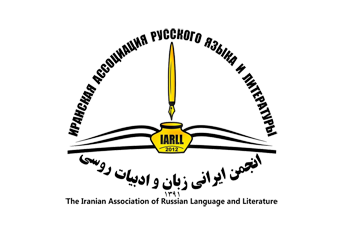SEMINAL CONTENT OF PREPOSITIONS-APPROXIMATORS IN THE RUSSIAN LANGUAGE AND THEIR CORRELATES IN THE PERSIAN LANGUAGE
DOI:
https://doi.org/10.61186/iarll.25.12Keywords:
Prepositions-Approximators, Correlates, Starting Point, Russian Language, Persian LanguageAbstract
The article is devoted to the consideration of the semantic content of units of the approximate type, i.e. prepositions-approximators in the Russian language and their correlates in the Persian language. In the Russian language, prepositions-approximators are used in situations characteristic of them, but in the Persian language the lexical meaning of approximation is expressed by synonymous words حدود، نزدیک، تا، حوالی, between the meanings of which there is no specific boundary. Also, the same Persian word with the meaning of approximate can be expressed by different Russian prepositions, the use of which can cause difficulties of a different nature for Iranian students. Thus, the noun حدود with the meaning of approximate can be expressed by prepositions-approximators около, с, под, порядка. The work pays special attention to the problem of distinguishing prepositions-approximators with the meanings of indefinite quantity, approximate quantity and probable quantity, the content side and features of the functioning of which have not yet been studied significantly in the Russian language in comparison with the Persian language. In the article, based on the visual method, visual means of the scale and the starting point on it, prepositions-approximators are systematized and ordered, their precise explanations of semantic content are given, the methods of their expression in the Persian language are studied in order to promote the conscious assimilation of prepositions-approximators by Iranian students of Russian.The novelty of the article lies in the fact that not only for the first time in Iranian Russian studies are prepositions-approximators compared with each other in relation to the point of reference and in terms of their semantic content, but also their Persian correlates are being studied. The results of the study can be applied to optimize methods of teaching prepositions-approximators in Iranian audiences and, accordingly, to further neutralize typical mistakes of Iranian Russian students and translators.
Extended abstract:
This article explores the semantic content of prepositional approximators—units of approximation at the morphological level—in the Russian language and their correlates in Persian. In linguistics, approximation refers to the use of inexact or approximate knowledge to explain concepts that are only partially understood or to simplify, adapt, or interpret information. Prepositional approximators play a key role in expressing such nuances in both languages, though their usage and semantic functions differ significantly.
In Russian, prepositional approximators are employed in specific contexts to convey approximation. In Persian, however, the lexical meaning of approximation is expressed through synonymous words such as «حدود» (hodud), «نزدیک» (nazdik), and «تا حوالی» (ta havāli), which lack precise boundaries. Additionally, a single Persian word with an approximative meaning can correspond to multiple Russian prepositions, creating potential challenges for Iranian students learning Russian. For example, the Persian noun «حدود» (hodud), meaning approximation, can be expressed in Russian by prepositions such as «около», «с», «под», and «порядка». This variability in translation highlights the complexity of approximative expressions across the two languages.
The study pays particular attention to the distinction between prepositional approximators that convey indefinite quantity, approximate quantity, and probable quantity. These categories, while crucial for understanding approximation, have not been thoroughly examined in Russian compared to Persian. The substantive differences and features of these approximators remain underexplored, making this a significant area of research.
The research material consists of sentences selected through continuous sampling from the «Russian-Persian Dictionary» by G.A. Voskanyan (2008) and the «National Corpus of the Russian Language» (NKRU). Additionally, the study incorporates recurring errors made by Iranian students learning Russian grammar at universities in Gonbad-Kavous, Bojnord, and Mazandaran between 2011 and 2024. These errors, collected from students at elementary, intermediate, and advanced levels, provide valuable insights into the challenges of mastering Russian prepositional approximators.
The study employs the following research methods:
1. «Continuous Sampling Method»: Used to select examples for analysis and to illustrate theoretical points.
2. «Comparative Method»: Applied to compare Russian prepositional approximators with their Persian equivalents.
3. «Visual Method»: Utilized to study prepositional approximators through visual means, such as scales and reference points, to clarify their semantic nuances.
The novelty of this research lies in its focus on comparing prepositional approximators in Russian and Persian, particularly in relation to their reference points on a scale and their semantic content. This is the first study in Iranian Russian studies to undertake such a comparative analysis, offering new insights into the lexical-grammatical field of approximation in both languages.
The findings reveal that the function of prepositional approximators in conveying approximation is not identical in Russian and Persian. Russian prepositions tend to describe the semantic nuances of approximation more precisely than their Persian equivalents. For instance, Russian offers a richer variety of prepositional approximators, forming a detailed lexical-grammatical field of approximation. In contrast, Persian relies more on lexical synonyms with broader, less specific meanings. This difference underscores the challenges Iranian students face when learning Russian approximators and highlights the need for targeted pedagogical approaches to address these difficulties.
In conclusion, the study demonstrates that while both Russian and Persian use prepositional approximators to express approximation, the semantic precision and variety of these expressions differ significantly between the two languages. The research contributes to a deeper understanding of approximation as a linguistic phenomenon and provides a foundation for further comparative studies in this area. By shedding light on the semantic and functional differences between Russian and Persian approximators, the study offers valuable insights for both linguists and language educators.
Downloads
Published
How to Cite
Issue
Section
License
Copyright (c) 2024 Issledovatel'skiy Zhurnal Russkogo Yazyka I Literatury

This work is licensed under a Creative Commons Attribution 4.0 International License.
![]()
"Creative Commons Attribution 4.0 International (CC-BY 4.0)"


